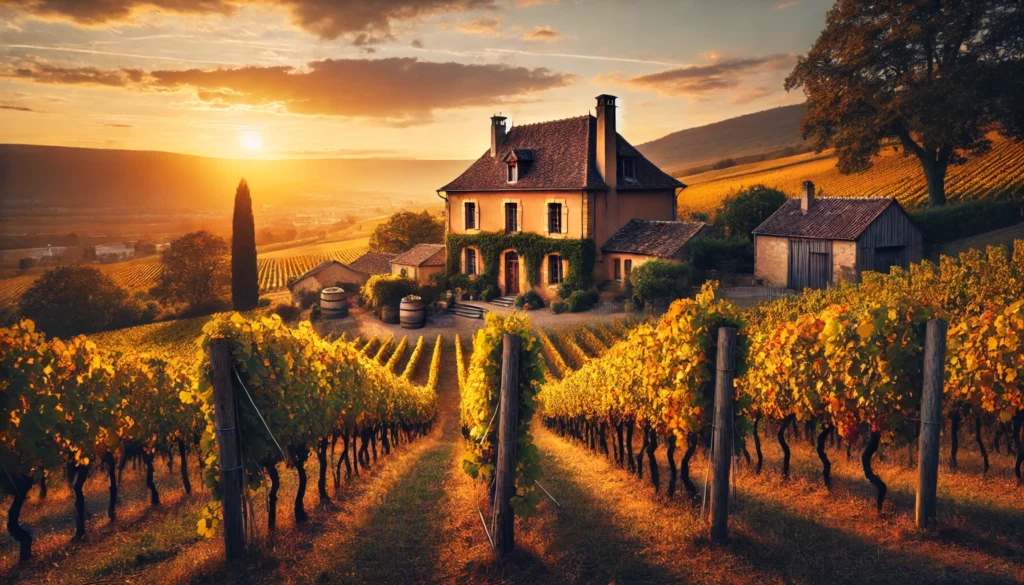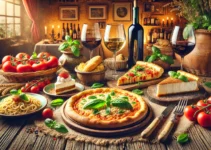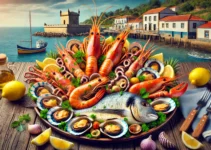France is synonymous with wine, and for good reason. The country’s diverse climate, rich history, and dedication to viticulture have produced some of the world’s most renowned wine regions. From the rolling hills of Bordeaux to the sun-drenched vineyards of Provence, each region offers a unique experience for wine lovers. In this ultimate guide, we’ll explore the best wine regions in France, highlighting their history, key varietals, top wineries, and must-visit spots. So, pour yourself a glass of your favorite French wine, and let’s embark on a journey through the wine regions of France.

Chapter 1: Bordeaux – The Heart of French Wine
Bordeaux is arguably the most famous wine region in France, known for its exceptional red blends. Located in the southwest of France, Bordeaux boasts over 7,000 châteaux and produces some of the world’s most prestigious wines.
History and Climate
Bordeaux’s winemaking history dates back to the Romans, who cultivated vineyards in the region as early as the first century AD. The region’s climate, influenced by the Atlantic Ocean, provides ideal conditions for viticulture, with warm summers and mild winters.
Key Varietals
Bordeaux is best known for its red blends, primarily made from Cabernet Sauvignon, Merlot, and Cabernet Franc. White Bordeaux wines are also notable, typically made from Sauvignon Blanc, Sémillon, and Muscadelle.
Top Wineries
1. Château Margaux: One of Bordeaux’s five first-growth châteaux, Château Margaux is renowned for its elegant and complex wines. A visit here offers a glimpse into the history and craftsmanship behind some of the world’s finest wines.
2. Château Pétrus: Located in the Pomerol appellation, Château Pétrus is famous for its Merlot-dominant wines. Though visits are rare, the nearby town of Saint-Émilion offers excellent wine-tasting opportunities.
3. Château Mouton Rothschild: Known for its opulent wines and artistic labels, Château Mouton Rothschild is a must-visit for wine enthusiasts. The estate also houses an impressive wine museum.
Must-Visit Spots
1. Saint-Émilion: This picturesque medieval town is a UNESCO World Heritage site and a hub for wine tourism. Wander through its cobbled streets, visit historic vineyards, and explore underground wine cellars.
2. Médoc: Home to many of Bordeaux’s most famous châteaux, the Médoc region offers scenic drives through vineyards and plenty of wine-tasting opportunities.
3. Bordeaux City: The city of Bordeaux itself is worth exploring, with its elegant architecture, vibrant markets, and the Cité du Vin wine museum.
Chapter 2: Burgundy – The Land of Pinot Noir and Chardonnay
Burgundy, or Bourgogne, is a wine region that rivals Bordeaux in prestige. Known for its Pinot Noir and Chardonnay, Burgundy offers a more intimate and artisanal approach to winemaking.
History and Climate
Burgundy’s winemaking history is deeply rooted in its monastic past, with monks cultivating vineyards as early as the Middle Ages. The region’s continental climate, with its hot summers and cold winters, is ideal for growing Pinot Noir and Chardonnay.
Key Varietals
Burgundy is celebrated for its Pinot Noir and Chardonnay, which are used to produce some of the world’s most sought-after wines. The region is also known for its Beaujolais wines, made from the Gamay grape.
Top Wineries
1. Domaine de la Romanée-Conti: Often referred to as DRC, this estate produces some of the most expensive and coveted wines in the world. Visits are limited, but wine enthusiasts can enjoy DRC wines at select restaurants and wine shops.
2. Domaine Leflaive: Located in Puligny-Montrachet, Domaine Leflaive is renowned for its exceptional white wines. The estate offers tours and tastings by appointment.
3. Domaine Faiveley: One of Burgundy’s largest and most historic estates, Domaine Faiveley produces a wide range of wines. Visitors can tour the vineyards and cellars, followed by a tasting.
Must-Visit Spots
1. Beaune: The heart of Burgundy’s wine trade, Beaune is a charming town with a wealth of wine shops, cellars, and the famous Hospices de Beaune. The annual wine auction is a highlight for wine lovers.
2. Côte de Nuits: Known for its Pinot Noir, the Côte de Nuits is home to some of Burgundy’s most famous vineyards. Take a scenic drive through the vineyards and visit the quaint villages along the way.
3. Chablis: Famous for its crisp, mineral-driven Chardonnays, Chablis is a must-visit for white wine enthusiasts. Explore the vineyards and enjoy tastings at local wineries.
Chapter 3: Champagne – The Sparkling Jewel
No exploration of French wine regions would be complete without a visit to Champagne. Located in the northeast of France, Champagne is the birthplace of the world’s most celebrated sparkling wine.
History and Climate
The history of Champagne dates back to the Roman era, but it wasn’t until the 17th century that the méthode champenoise (traditional method) was developed. The region’s cool climate and chalky soils create the perfect conditions for producing high-quality sparkling wines.
Key Varietals
Champagne is typically made from three main grape varieties: Chardonnay, Pinot Noir, and Pinot Meunier. These grapes are blended to create the region’s signature sparkling wines.
Top Wineries
1. Moët & Chandon: One of the most famous Champagne houses, Moët & Chandon offers guided tours of its historic cellars, followed by tastings of its prestigious Champagnes.
2. Veuve Clicquot: Known for its distinctive yellow label, Veuve Clicquot offers an in-depth look at the Champagne-making process, along with tastings of its renowned bubbly.
3. Taittinger: This family-owned Champagne house offers tours of its ancient cellars, which date back to Roman times. Visitors can enjoy tastings of Taittinger’s elegant Champagnes.
Must-Visit Spots
1. Reims: The unofficial capital of the Champagne region, Reims is home to many prestigious Champagne houses. The city’s Gothic cathedral is also a must-see.
2. Epernay: Known as the “Capital of Champagne,” Epernay is home to the famous Avenue de Champagne, lined with grand Champagne houses offering tours and tastings.
3. Montagne de Reims: This sub-region is known for its picturesque vineyards and charming villages. Explore the scenic Route Touristique du Champagne for breathtaking views and tasting opportunities.
Chapter 4: Provence – Sun, Sea, and Rose
Provence, located in the southeastern corner of France, is synonymous with sun-drenched vineyards and refreshing rosé wines. The region’s Mediterranean climate and picturesque landscapes make it a popular destination for wine lovers.
History and Climate
Provence has a winemaking history that dates back over 2,600 years, making it one of the oldest wine regions in France. The region’s warm, dry climate and diverse soils contribute to the production of high-quality wines.
Key Varietals
Provence is best known for its rosé wines, made primarily from Grenache, Syrah, and Mourvèdre. The region also produces excellent red and white wines.
Top Wineries
1. Château d’Esclans: Known for its Whispering Angel rosé, Château d’Esclans is a top destination for rosé enthusiasts. The estate offers tastings and tours of its beautiful vineyards and cellars.
2. Domaine Tempier: Located in Bandol, Domaine Tempier is renowned for its robust red wines and elegant rosés. Visitors can enjoy tastings of its acclaimed wines.
3. Chateau Sainte Roseline: This historic estate offers guided tours of its vineyards and cellars, along with tastings of its award-winning wines. The estate also features a stunning chapel and art gallery.
Must-Visit Spots
1. Aix-en-Provence: This charming town is a great base for exploring the wineries of Provence. Stroll through its colorful markets, visit the historic Cours Mirabeau, and enjoy a leisurely wine tasting.
2. Luberon: Known for its picturesque villages and rolling vineyards, the Luberon is a must-visit for wine lovers. Explore the scenic countryside and visit local wineries for tastings.
3. Bandol: Famous for its robust red wines, Bandol is a picturesque coastal town with excellent wineries. Enjoy wine tastings with a view of the Mediterranean Sea.
Chapter 5: Loire Valley – The Garden of France
The Loire Valley, often referred to as the “Garden of France,” is known for its stunning châteaux and diverse wine production. The region’s varied climate and soils produce a wide range of wines, from crisp whites to elegant reds.
History and Climate
The Loire Valley has a rich winemaking history that dates back to the Roman era. The region’s climate varies from east to west, with cooler temperatures in the east and a more temperate maritime climate in the west.
Key Varietals
The Loire Valley is known for its white wines, particularly Sauvignon Blanc, Chenin Blanc, and Muscadet. The region also produces excellent red wines from Cabernet Franc and Pinot Noir.
Top Wineries
1. Domaine Huet: Located in Vouvray, Domaine Huet is renowned for its exceptional Chenin Blanc wines. The estate offers tastings and tours of its biodynamic vineyards.
2. Château de Chambord: While better known for its stunning architecture, Château de Chambord also produces wine. Visitors can enjoy tastings of its unique wines made from historic grape varieties.
3. Domaine des Baumard: This family-owned estate in Anjou is known for its exceptional white wines, particularly its Savennières. The estate offers tastings and tours by appointment.
Must-Visit Spots
1. Amboise: This charming town is home to the Château d’Amboise and the nearby Clos Lucé, the final residence of Leonardo da Vinci. Enjoy wine tastings and explore the historic sites.
2. Saumur: Known for its sparkling wines, Saumur is a picturesque town with excellent wineries. Visit the stunning Château de Saumur and enjoy tastings of local wines.
3. Sancerre: Famous for its Sauvignon Blanc, Sancerre is a must-visit for white wine lovers. Explore the hilltop town and its surrounding vineyards for a taste of the region’s best wines.
Chapter 6: Alsace – A Blend of Cultures and Flavors
Alsace, located in northeastern France, is a unique wine region known for its aromatic white wines and picturesque villages. The region’s mix of French and German influences is reflected in its wines and cuisine.
History and Climate
Alsace’s winemaking history dates back to Roman times, with a rich cultural heritage influenced by both France and Germany. The region’s cool, continental climate is ideal for producing aromatic white wines.
Key Varietals
Alsace is renowned for its white wines, particularly Riesling, Gewürztraminer, and Pinot Gris. The region also produces excellent Crémant d’Alsace, a sparkling wine made in the traditional method.
Top Wineries
1. Domaine Zind-Humbrecht: This biodynamic estate is known for its exceptional Rieslings and Gewürztraminers. Visitors can enjoy tastings and learn about the estate’s sustainable practices.
2. Trimbach: With a winemaking history dating back to 1626, Trimbach is one of Alsace’s most prestigious wineries. The estate offers tastings of its renowned Rieslings and other varietals.
3. Hugel & Fils: Located in Riquewihr, Hugel & Fils is a family-owned winery with a rich history. Visitors can tour the cellars and taste a range of exceptional Alsace wines.
Must-Visit Spots
1. Strasbourg: The capital of Alsace, Strasbourg is known for its stunning cathedral and picturesque old town. Enjoy wine tastings at local wine bars and explore the city’s charming streets.
2. Colmar: Often referred to as the “Capital of Alsatian Wine,” Colmar is a beautiful town with a wealth of wine-tasting opportunities. Stroll through its colorful streets and visit nearby wineries.
3. Route des Vins d’Alsace: This scenic wine route winds through some of Alsace’s most picturesque villages and vineyards. Explore charming towns like Eguisheim and Ribeauvillé while enjoying tastings at local wineries.
Chapter 7: Rhone Valley – Diversity in Every Glass
The Rhone Valley, stretching from Lyon to Avignon, is known for its diverse wine production and stunning landscapes. The region is divided into two distinct areas: the Northern Rhone and the Southern Rhone, each with its own unique characteristics.
History and Climate
The Rhone Valley’s winemaking history dates back to ancient times, with vineyards cultivated by the Greeks and Romans. The region’s climate varies from the continental climate of the north to the Mediterranean climate of the south.
Key Varietals
The Northern Rhone is known for its Syrah-based red wines and Viognier-based white wines. The Southern Rhone produces a wide range of red blends, often dominated by Grenache, Syrah, and Mourvèdre, as well as excellent rosé and white wines.
Top Wineries
1. Chateau de Beaucastel: Located in Chateauneuf-du-Pape, Chateau de Beaucastel is renowned for its complex and age-worthy red wines. The estate offers tours and tastings by appointment.
2. E. Guigal: This family-owned winery in Cote-Rotie is known for its exceptional Syrah wines. Visitors can tour the vineyards and cellars, followed by a tasting of Guigal’s renowned wines.
3. Domaine Yves Cuilleron: Located in Condrieu, Domaine Yves Cuilleron is celebrated for its Viognier-based wines. The estate offers tastings and tours of its modern facilities.
Must-Visit Spots
1. Châteauneuf-du-Pape: This historic village is synonymous with Rhône Valley wine. Explore the vineyards, visit the ruins of the medieval castle, and enjoy tastings at local wineries.
2. Hermitage: Known for its powerful Syrah wines, Hermitage is a must-visit for red wine enthusiasts. Climb the hill for stunning views and visit the local wineries.
3. Avignon: While not a wine-producing town, Avignon is an excellent base for exploring the Southern Rhône. Visit the famous Palais des Papes and enjoy the vibrant local markets.
Chapter 8: Conclusion
Exploring the wine regions of France is a journey through history, culture, and unparalleled flavors. Each region offers a unique experience, from the prestigious châteaux of Bordeaux to the sun-soaked vineyards of Provence. Whether you’re a seasoned wine connoisseur or a curious traveler, the diverse and rich wine culture of France is sure to captivate your senses.
We hope this guide has inspired you to embark on your own wine adventure in France. So, raise a glass, savor the flavors, and enjoy the incredible journey through one of the world’s most celebrated wine-producing countries.
Happy tasting!


